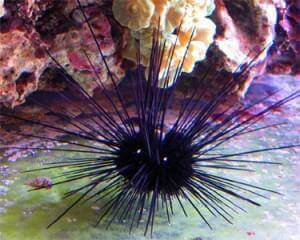 “Recently biologists and engineers from Australian universities have analyzed the sea urchin spine’s ingenious structure under a powerful tool called micro-computed tomography (microCT). Each spine is a single crystal of calcite (CaCO3). This is normally a soft and brittle mineral, but it is highly strengthened in several ways. It is a hollow tapered cylinder, which saves weight and materials without sacrificing much strength. Some magnesium ions replace calcium ions, which produce an irregularity that impedes cracks from propagating (the same principle explains the greater strength of metal alloys). So any fractures are more like in glass, a non-crystalline solid, than a crystal. This fracturing absorbs energy and protects the main spherical shell (called a test) of the animal. There is also a small amount of organic material (glycoprotein) with the mineral crystal, which makes a huge difference to toughness. The strength is further enhanced by its very fine structure. The crystal contains finely spaced radial wedges connected by bridges. The thin edges direct stresses to the outside, and the spaces stop fractures from spreading through the whole spine. The researchers say, ‘Overall, the spine is highly porous with an intricate structural hierarchy.’ However, in a popular report, the researchers paid the obligatory fact-free homage to evolution. They called this amazing structure an ‘evolutionary feature’ that was ‘optimized’ and ‘survived hundreds of millions of years.’ Yet they also say ‘the finding could offer clues for creating new bio-inspired materials and more efficient engineering designs.’ This should have been a clue that the original was designed as well!” Jonathan Sarfati, “Sea Urchin,” Creation Magazine, Jan. 2014 Comments are closed.
|
Archives
February 2020
|
Ads do not imply endorsement | Policy/Terms of Service | About Us | Contact Us | © Life Work Academy, Inc.
 RSS Feed
RSS Feed

